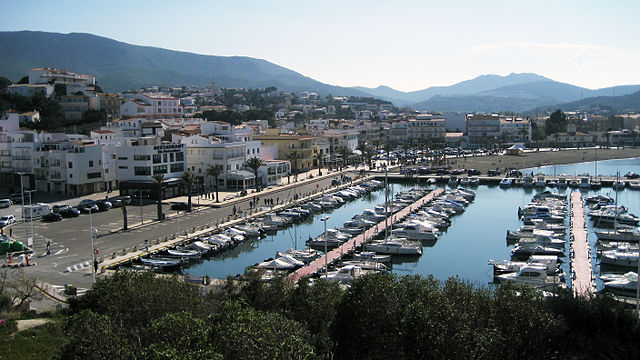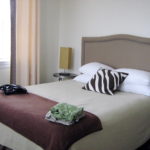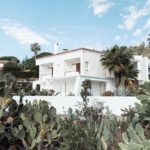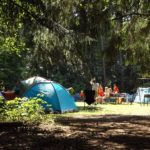Llança is a popular tourist location with one of the last remaining fishing fleets on the Costa Brava.

A view of the port at Llançà
Situated just north of Cap de Creus it can be all to easy to drive by Llançà without really knowing it’s there. Even if you turn off the N-260, which connects the very north of the Costa Brava, you barely get an impression of the town. On the way to Port de la Selva it’s all too easy to simply drive right through Llançà without stopping.
But spend a couple of hours in Llançà and you’ll find the historic old town has some real charm. Wander the narrow streets to the main square and you’ll find a 13th century defensive tower and an 18th century church built on the ruins of a Roman temple. Nearby is a watercolour museum.
The town also has a large port and is one of the few places left on the Costa Brava with an active fishing industry. Most of the port is occupied by privately owned boats but a local dive centre operates here and offers afternoon boat excursions along the coast.
About Llançà
Located just north of the Cap de Creus, Llançà is located on the final stretch of the Costa Brava that extends northwards before meeting France. Until the 1960s the port consisted of fishermen’s huts but has been transformed so that today the fishing fleet is greatly outnumbered by leisure boats.
The modern town of Llançà is made up of what were formerly Llançà and the Port de Llançà and while they were once considered to be separate, today they are part of the same continuous urban sprawl. The port area consists mainly of fairly modern developments, while in the old heart of Llançà there are still signs of what the town once was, although really it is too big to have the charm of nearby Port de la Selva or Cadaqués.
It does have some advantages though, in that it is fairly easy to get to without the winding roads of either of those towns and the shopping and facilities are far more comprehensive; Llançà has large supermarkets and things like vets, both things its near neighbours lack.
You can zoom in or click on the icons for more infoBeaches
The town has a sandy beach with all the usual facilities and the water is clean, although bear in mind the marina is right next to the beach so you may get some contamination from fuel spills and the view is rather dominated by the marina wall. But it’s a decent town beach with a promenade shaded by palms, a good view across the bay and numerous restaurants.
The coastline between Llançà and Port de la Selva is fairly rugged, with plenty of small coves to explore and a good tip if you explore this area is to take a face mask and snorkel as well as plastic sandals; as well as stones there are plenty of sea urchins. If you head from the main beach and past the port you’ll reach a small car park. Continue into the car park and you’ll find a small shingle beach, platja de la Gola.
There are many houses and urbanisations along this area of coast and so while it is not as unspoilt as it could be it is certainly nothing like the worst excesses of the Costa Brava and there are no high rise hotels or apartments along here.
To the south of the peninsula are a number of sand beaches that can be worth visiting. Platja el Morer, platja la Farella, and platja de les tonyines are all found before the isles del Falcó and reached from the urban sprawl of Llançá. But if you continue out of the town towards Port de la Selva you’ll soon come to a turnoff for platja cau del Llop – wolf’s den beach. There are no wolves any more but this this 100 metre stretch of sand with a beach bar open in the summer and an uninterrupted view of the Mediterranean.
To the north of Llançá there are a number of rocky and coarse sand coves that can be good to explore with a snorkel. And then platja del Grifeu is a decent sized sandy beach with a hotel and a number of restaurants. There’s a car park just behind it if you are travelling there for the day. A little further on is platja Canyelles, a narrow sand beach approximately twice as long but more difficult to reach and with no facilities at all.
History
The area around Llançà appears to have been inhabited since prehistoric times, with a number of dolmens found in the surrounding hills, where you will also find the monastery of Sant Pere de Rodes. The monastery is first documented in 878, around the time that the nucleus of Llançà village was formed after inhabitants moved inland from the coast to avoid pirate raids.
More recently, Llançà’s economy soared in the 18th century thanks to the production and exportation of wine and olive oil and it was during this time that the parish church of Sant Vicenç was built. However, common with much of the Costa Brava, the end of the century saw vineyards decimated by phylloxera and effectively ending the area’s wine boom.
The town became popular as a touristy destination during the 1960s and has avoided the fate of the worst excesses of Spain’s costas, while supporting a huge tourist industry.
Where to stay
Holiday accommodation on this part of the Costa Brava primarily consists of villas and apartments with very few hotels. The hotels operating in Llançá are independently owned and you won’t find any of the major chains found elsewhere. Instead you’ll find smaller establishments with more personal service.
Foodies will want to stay at Mirimar Rooms (Passeig Marítim, 7) where there are just five rooms above a 2-star Michelin restaurant. It’s located on the promenade and just a few steps from the main beach. The contemporary Hotel Carbonell (Carrer Major, 19) is another good option, just ten minutes walk from the beach near the town’s 13th century watch tower. Another good choice if you’re looking to stay in a hotel with a decent restaurant is La Goleta (Carrer Pintor Tarruella, 22). The hotel is family run, the restaurant is one of the best in Llançá and it’s 100 metres to the beach. They even provide guests with beach towels if you need one.
While the town has just a single, fairly basic campsite, Camping L’Ombra is open year round and has more than 400 pitches. There are also some excellent campsites in El Port de la Selva and another at Colera.
Eating in and eating out
Els Pescadors (Carrer de Castellar, 41) in the port is highly regarded for seafood and meat dishes. The restaurants is attached Hotel La Goleta and tends to be full of local families, particularly in the evenings, and fish is provided by local fishermen and so as fresh as you can get. If you’re looking for serious cooking then Paco Pérez’s Restaurant Miramar (Passeig Marítim, 7) is a 2-star Michelin eatery with cuisine that is out of this world and prices to match. At the time of writing the tasting menu is €220.
Restaurant La Vela (Av. Pau Casals, 25) is also good for seafood and has been a local institution since 1968 but its bright modern decor is not to everyone’s taste. and El Vaixell (Castellar, 62) does a menu starting at €16. The restaurant focuses on traditional Ampurdan cuisine, especially fish and rice dishes, but there are plenty of other bars and restaurants. You should be able to find something that suits you for price, service, ambiance and location including a number of pizzarias and fast food joints.
If you’re self catering then there are a number of smaller supermarkets clustered in Llançà old town, with a Valvi located off the main road and a large Eurospar on the edge of town. There is also a butcher down in the port as well as a couple of fishmongers for really fresh fish and two more in the old town.
What to see and do
Much of modern Llançà’s economy is still derived from the sea and there are plenty of shops and restaurants in the marina and surrounding area. You’ll also find a dive centre, boat rentals and other water sports, as well as boat excursions down the coast to see the Cap de Creus from the sea.
Local sites include the church of Sant Vicenç, dating from the 18th century, which was constructed on the ruins of a Roman temple, the remains of the church of Sant Martí de Vallmala, the chapel of Mare de Déu del Port which dates from the 17th century and a 13th century defensive tower.
Llançà’s artistic heritage is also celebrated with a watercolour museum created in 1989 thanks to the donation of artist Josep Maria Martínez Lozano where you can see 100 watercolours. The Museu de l’Aquarela is continually adding to its collection and has close to 100 more watercolour paintings by other artists too.
Nearby, high in the hills above El Port de la Selva, is the monastery of Sant Pere de Rodes, which is worth visiting just for the views. Above it on the summit of Sant Salvador Saverdera lie the ruins of Verdera castle but the monastery has been extensively restored. It was first documented in 878 but most of the construction took place in the 11th and 12th centuries and boasts commanding view over Cap de Creus.
Scuba divers will want to head to the dive shop on Carrer Pintor Martinez Lozano. It’s home to the Centre d’Immersió Cap de Creus which during the summer offers boat dives every morning to various sites along the coastline of Cap de Creus. The boat is well equipped and the dive centre is well organised. Anyone keen to start diving can take lessons.
There are numerous dive sites suitable for varying levels of experience. While the tramuntana is blowing conditions can become difficult as the sea gets choppy and there can also be some fairly strong currents. But when calm the visibility can be excellent with a variety of marine life to look out for, including large groupers.
The dive centre also organises boat tours along the coast in the afternoons. You can visit the dive shop for details and booking or ask in the harbour. Look out for signs leading you to the boat.
How to get to Llançà
Llançà can be reached from Figueres within 25 minutes by road and also has a train station on the edge of town, with trains running once every hour or two depending on the time of day.
Major rail stops include Barcelona, Girona, Figueres and Portbou on the border and so fairly convenient to reach by train, while by car the coast road runs up to Colera and Portbou before reaching France.




